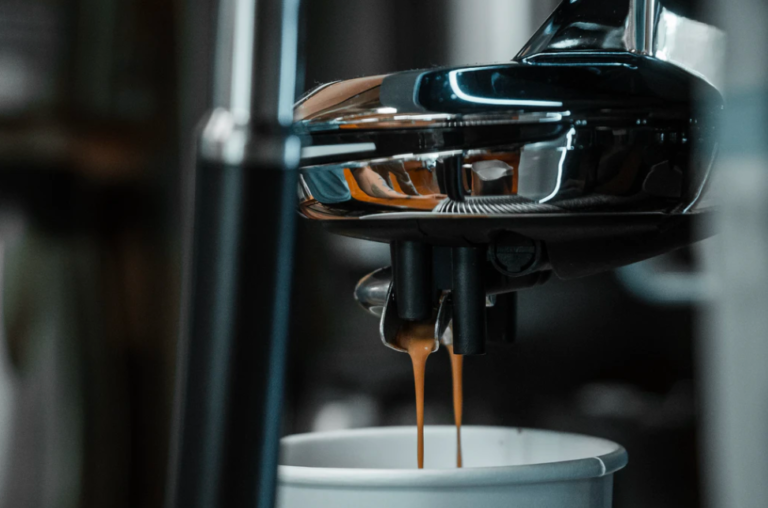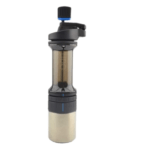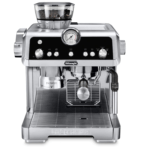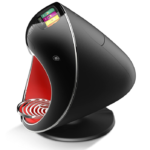How to Descale a Coffee Maker – Everything You Should Know
When was the last time you descaled your coffee machine? If it has been a while or you’ve never descaled your brewing device, it’s a good thing you’ve landed on this page.
Failing to descale your coffee maker means it is probably very icky inside. The appliance exterior may look pristine, but believe us, if you could look within it, there is a strong chance you’ll never want to drink coffee from your machine again.
Luckily, descaling a coffee maker is simple. In this guide, our team will go over how to descale a coffee maker, among other helpful tips you should be aware of. This will not only make your coffee taste better but will keep your brewing device in top-notch condition for much longer.

What Does Descaling Coffee Makers Mean?
Let’s go over hard water as this is an important component to understanding descaling. Hard water has a high mineral content (limestone, calcium, magnesium) compared to soft water. These minerals build up over time inside of your coffee maker – just like it does in your dishwasher or sink.
This, in turn, impacts the taste of your coffee (negatively). It also blocks holes in your appliance’s fixtures, causing it to malfunction somewhere along the line. Descaling your coffee machine removes all buildup resulting in fresh cups and a better functioning appliance.
When Is It Time to Descale a Coffee Maker?
Some coffee makers flash a red light when it is time to descale a coffee machine. However, not all brewing devices do this, which is probably why you were unaware you have to descale your machine. You may not have that warning if you have an older machine or one with fewer bells and whistles. That’s okay, though, because even without a light, you can see when it’s time to descale. How? There are two main ways:
- – You’ll see some chalky white residue
- – Your coffee will start to taste funky
- – Strange odors and aromas will fill the room
-
While these are all signs it is time to clean your appliance, we recommend descaling it a few times a year instead of waiting for something to malfunction. You may have to descale it more or less depending on how often you use it and the hardness of your water.
Whatever you do, do not wait until you witness one of the three signs of a dirty machine mentioned above. Take matters into your own hands and clean out the inside of your brewing device.
A Step-By-Step Guide to Descaling Coffee Makers
Cleaning the inside of your machine will prevent mold and mineral buildup as well as coffee oil residue. You want to descale your coffee maker a few times a year depending on how often you use it and the hardness of your water.
Here is a step-by-step guide on how to descale a coffee maker. You’ll be surprised at how easy it is to clean your appliance inside out.
Materials Needed
- – Water
- – Distilled white vinegar
- – Descaling solution (Optional)
-
Instructions
- Empty your coffee maker. Start by making sure your carafe is completely empty, clean, and free of any grounds.
- Create the cleaning solution. Mix the carafe with equal parts of water and white vinegar. If you purchased a descaling solution, follow the instructions on the bottle. However, they should be very similar to the remaining steps.
- Pour your solution into the water chamber. Fill the water tank all the way to its capacity. This will give you a good idea of how much water/vinegar you’ll need to mix.
- Hit brew. Run half of a brew cycle. How? Halfway through the brewing cycle, turn the machine off. Let it sit for an hour. If you clean your machine regularly, you can skip the rest period and run the complete cycle. If you have not descaled your machine in ages, let it sit for the complete hour before resuming.
- Resume brew cycle. Once the hour is up, turn the coffee maker back on and finish the cycle.
- Rinse. Pour out the vinegar water solution and thoroughly rinse out the carafe.
- Run a water cycle. Fill the chamber up with only water and let the machine run. Repeat this a couple of times, allowing your device to cool down between brews. This will get rid of any lingering vinegar smells or flavors.
-
Conclusion
As you can see, descaling your coffee appliance is much easier than it may sound. Don’t be intimidated by this term. Instead, take the information we just covered and put it to good use.
Don’t be surprised if your next pot of coffee tastes fresher than usual. Descaling your brewing appliance is so important not only for the flavor of your coffee but the maintenance of your machine. So, if you haven’t descaled your coffee maker in a while, now is the time to do so.





